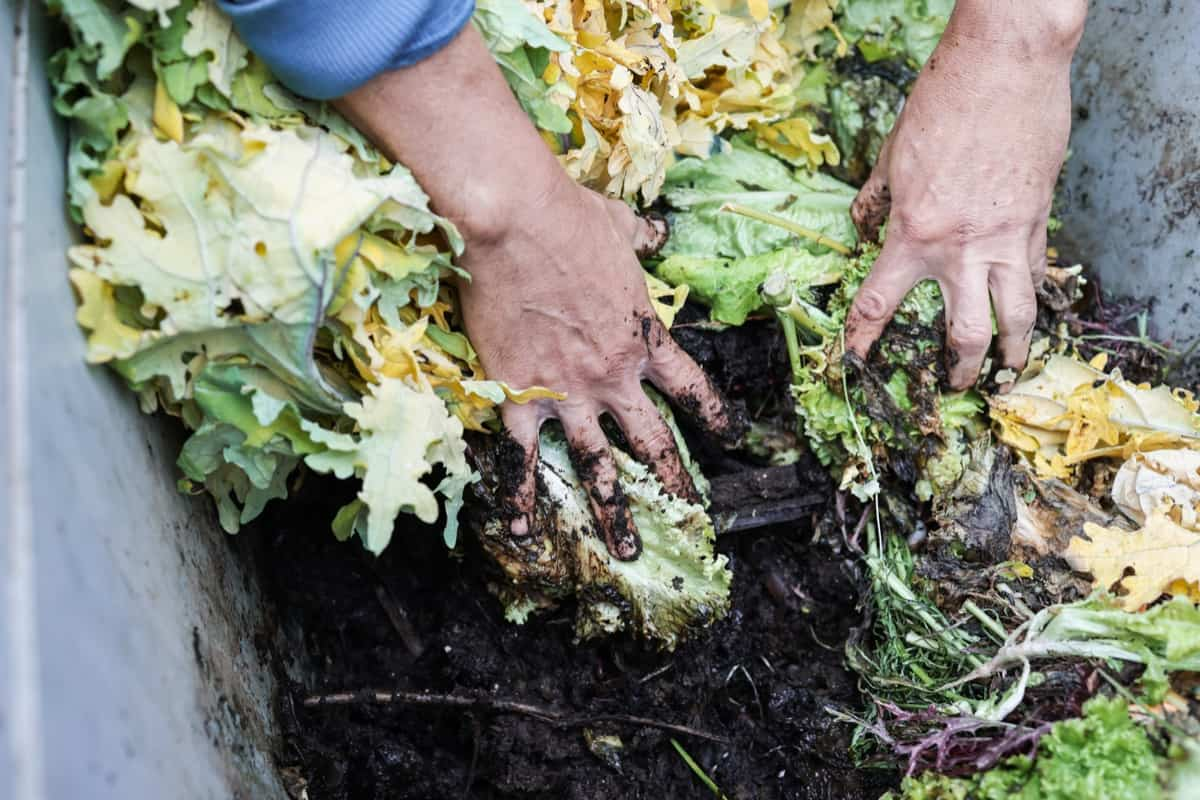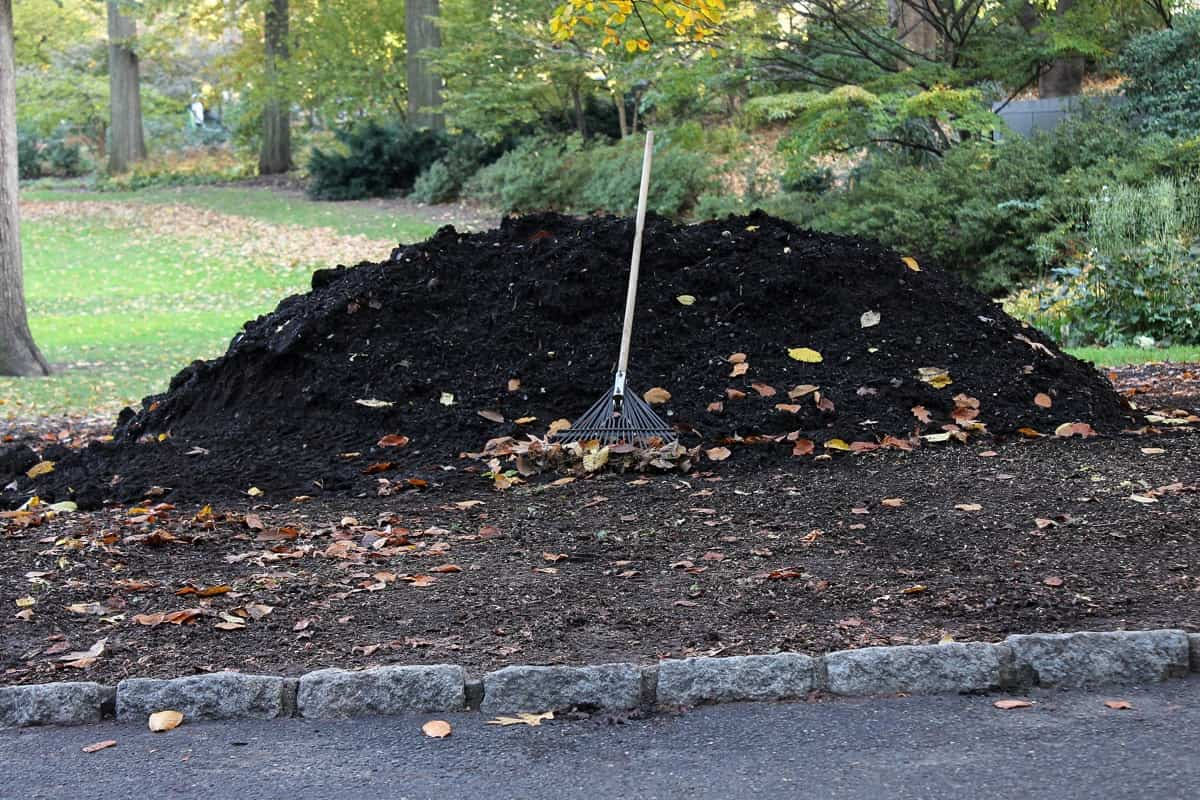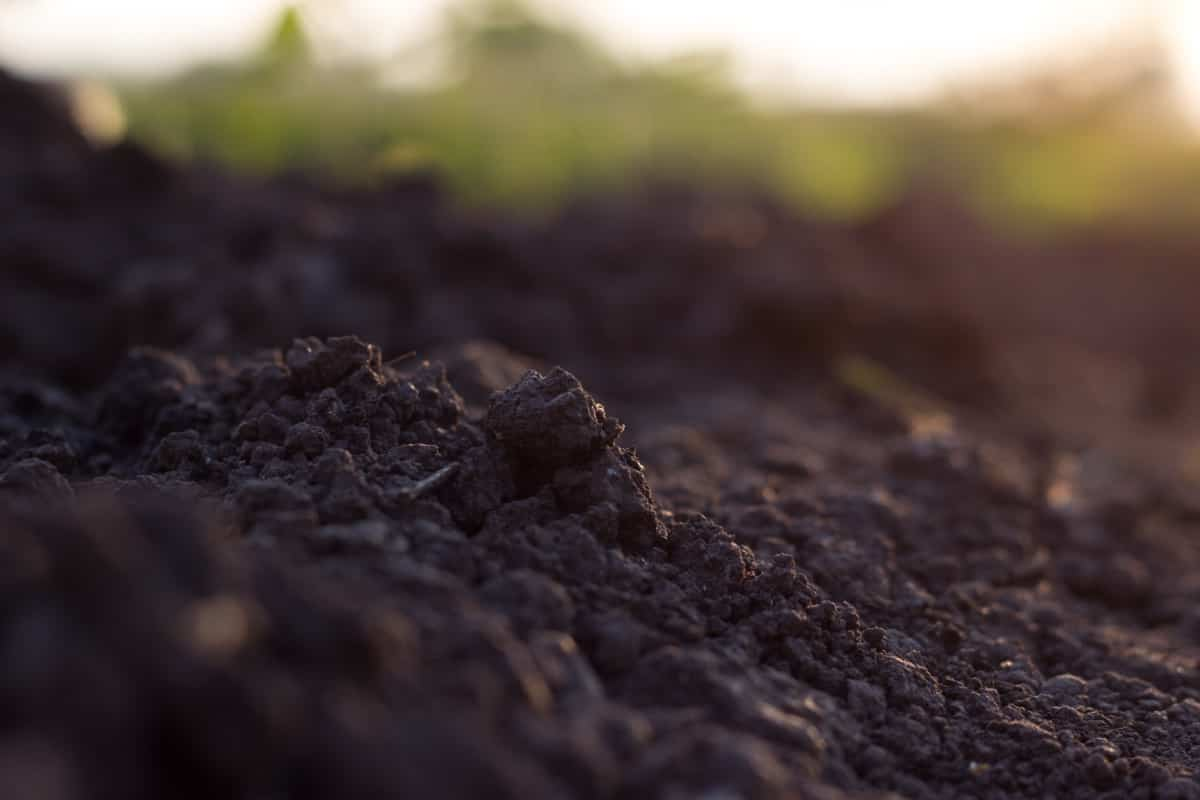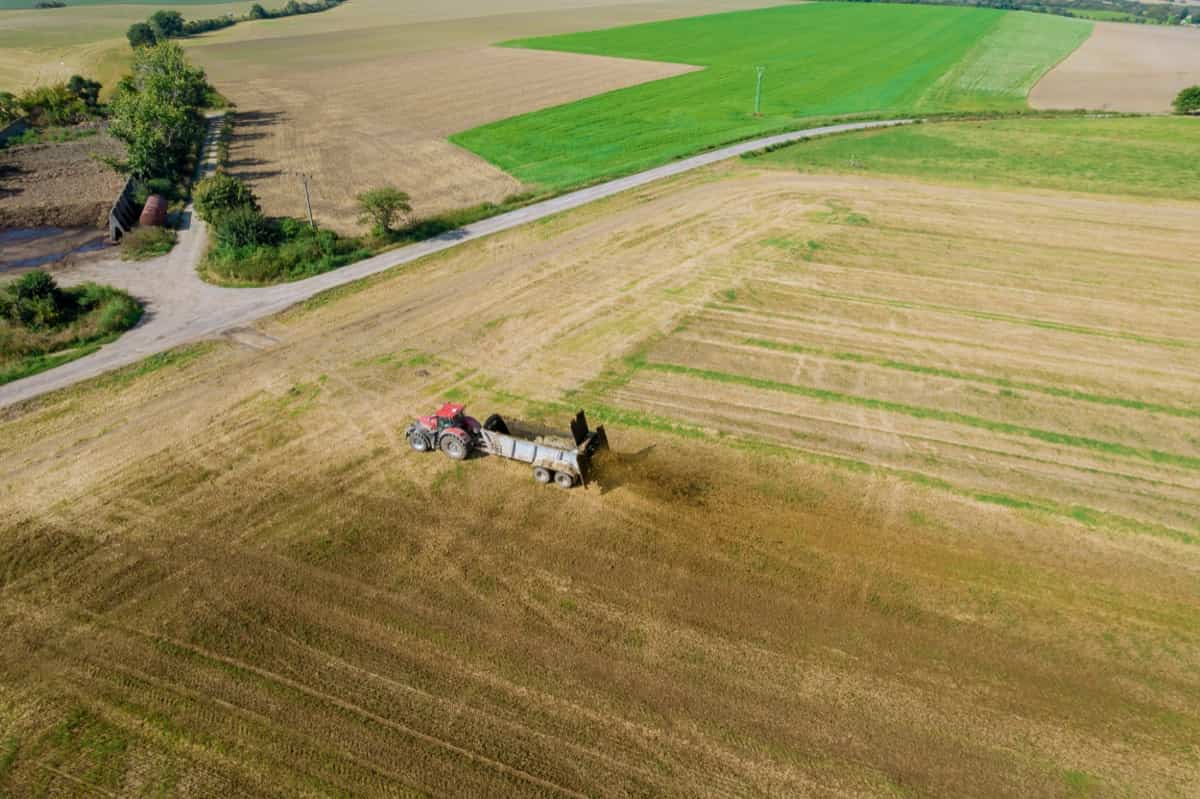Welcome to our blog, where we’ll explore the remarkable power of bio-composting and its impact on sustainable soil health. Agricultural by-products have emerged as valuable resources in our quest for eco-friendly solutions. Bio-composting, utilizing these by-products for nutrient-rich compost, offers many benefits.

It reduces waste, enhances soil fertility, promotes plant growth, and reduces the need for synthetic fertilizers. Join us as we delve into the techniques, microorganisms, nutrient content, best practices, and commercial applications of bio-composting using agricultural by-products.
Bio-composting with Agricultural By-products
What is Bio-Composting?
Bio-composting is a natural process of transforming organic materials, such as agricultural by-products, into nutrient-rich compost. It offers numerous benefits for sustainable agriculture and soil health. In this process, microorganisms break down the organic matter, releasing valuable nutrients and forming a dark, crumbly substance called compost. This compost is a powerful soil amendment that improves soil structure, retains moisture, and enhances plant nutrient availability. Bio-composting also helps in reducing waste and landfill usage while promoting eco-friendly practices.
Benefits of Agricultural By-products in Bio-composting
- Enhanced Soil Fertility: Agricultural by-products used in bio-composting enrich the soil by releasing essential nutrients like nitrogen, phosphorus, and potassium, promoting healthy plant growth.
- Waste Reduction: By diverting agricultural by-products from landfills and utilizing them in bio-composting, we significantly reduce waste and its associated environmental impact.
- Improved Soil Structure: Adding agricultural by-products enhances soil structure, making it more crumbly and allowing better aeration, water infiltration, and root development.
- Moisture Retention: Compost derived from agricultural by-products acts as a natural sponge, retaining moisture in the soil, which helps reduce water requirements and drought stress on plants.
- Disease Suppression: Bio-composting with agricultural by-products fosters the growth of beneficial microorganisms, which can help suppress harmful pathogens and diseases in the soil.
- Weed Control: Properly composted agricultural by-products can create a physical barrier that inhibits weed growth, reducing the need for herbicides.
- Sustainable Nutrient Source: Utilizing agricultural by-products in bio-composting provides a sustainable source of nutrients, reducing the dependence on synthetic fertilizers.
- Carbon Sequestration: Bio-composting converts agricultural by-products into stable organic matter, effectively sequestering carbon in the soil and mitigating climate change.
- Improved Crop Yield and Quality: The nutrient-rich compost derived from agricultural by-products promotes optimal plant nutrition, increasing crop yields and improving quality.
In case you missed it: Biosecurity Measures in Poultry: Effective Strategies for Disease Prevention

Agricultural By-products for Bio-composting
Crop Residues: Crop residues, such as corn stalks, wheat straws, and rice husks, are excellent agricultural by-products for bio-composting. They provide a good carbon source and help enhance the nutrient content of the compost.
Animal Manure: Animal manure, such as cow, horse, or poultry manure, is rich in organic matter and essential nutrients. It contributes to the microbial activity in the compost, accelerating the decomposition process and enriching the final compost with valuable nutrients.
Fruit and Vegetable Waste: Leftover fruit and vegetable scraps from food processing industries or household waste are ideal for bio-composting. They provide a diverse range of nutrients and contribute to the overall nutrient balance of the compost.
Coffee Grounds: Coffee grounds are a popular agricultural by-product for bio-composting. They are rich in nitrogen and organic matter, making them an excellent addition to compost piles, enhancing microbial activity and nutrient availability.
Sawdust and Wood Chips: Sawdust and wood chips from lumber mills or woodworking industries can be used as a carbon-rich material in bio-composting. They help balance the carbon-to-nitrogen ratio in the compost pile and improve its structure.
Techniques for Bio-composting with Agricultural Waste
These techniques offer flexibility in scale and resources required, allowing for efficient conversion of agricultural waste into nutrient-rich compost.
- Windrow Composting: This technique involves creating long, narrow piles or windrows of agricultural waste. Regular turning, mixing, and monitoring temperature and moisture levels promote efficient decomposition.
- Static Pile Composting: In this method, agricultural waste is stacked in a stationary pile. Adequate aeration and moisture management are crucial for successful decomposition.
- In-Vessel Composting involves using enclosed containers or vessels to compost agricultural waste. It allows for precise control of temperature, moisture, and aeration, resulting in faster decomposition.
- Vermicomposting: This method utilizes earthworms to break down agricultural waste. The worms consume the organic material, expelling nutrient-rich castings that serve as excellent compost.
- Aerated Static Pile Composting: Agricultural waste is placed in a static pile with perforated pipes or aeration systems. Forced air circulation enhances microbial activity, accelerating the composting process.
In case you missed it: Importance of Biopesticides and Their Role in Agriculture

Microorganisms in Agricultural By-product Bio-composting
These microorganisms work synergistically in bio-composting, breaking down agricultural by-products, releasing nutrients, and transforming complex organic matter into stable, nutrient-rich compost.
- Bacteria: Bacteria are the primary decomposers in composting. They break down complex organic forms into simpler forms, releasing nutrients and generating heat. Examples include Bacillus, Pseudomonas, and Actinobacteria.
- Fungi: Fungi, such as Aspergillus and Penicillium, contribute to the breakdown of cellulose and lignin, enhancing the decomposition of agricultural by-products. They also help create a stable, crumbly compost structure.
- Actinomycetes: Actinomycetes are filamentous bacteria that resemble fungi. They contribute to the breakdown of tougher plant materials, like lignin and cellulose, and produce enzymes that degrade complex organic compounds.
- Protozoa: Protozoa feed on bacteria and fungi, regulating their populations and nutrient cycling. They help maintain a balanced microbial community in the compost pile.
- Earthworms: While not microorganisms, earthworms are important composting allies. They consume organic matter, enhancing decomposition, and their castings contribute to the nutrient-rich compost.
Different Composting with Agricultural By-products
- Traditional Composting: This method involves creating a compost pile with a mix of agricultural by-products and organic matter, allowing natural decomposition to occur over time.
- Hot Composting: It employs a higher temperature range, typically between 131-170°F (55-77°C), to accelerate the decomposition process. It requires careful monitoring of temperature and regular turning of the compost pile.
- Cold Composting: This method relies on natural decomposition at ambient temperatures. It is a slower process but requires less active management.
- Vermicomposting involves using earthworms to break down agricultural by-products, resulting in nutrient-rich vermicompost.
- Bokashi Composting: This anaerobic fermentation method utilizes inoculated bran to ferment agricultural by-products, producing a nutrient-rich product that can be further composted or used directly in the soil.
In case you missed it: How to Make Goat Manure Compost: A Step-by-Step Guide to Using in Your Garden/Farm

Bio-Composting Process with Agricultural By-products
- Collection and Sorting: Gather agricultural by-products, such as crop residues, animal manure, and fruit/vegetable waste. Remove any non-compostable materials, such as plastic or metal.
- Shredding or Chopping: Break down large materials into smaller pieces to facilitate quicker decomposition and enhance the surface area for microbial activity.
- Carbon-to-Nitrogen Ratio: Maintain the appropriate carbon-to-nitrogen (C:N) ratio, typically around 25-30:1. Balance high carbon materials (e.g., straw, sawdust) with high nitrogen materials (e.g., manure, green plant waste).
- Layering: Create alternating layers of carbon-rich and nitrogen-rich materials to ensure a well-balanced compost pile.
- Moisture Management: To support microbial activity, maintain adequate moisture levels, typically around 50-60%. Add water if the pile becomes too dry or incorporate dry materials if it becomes too wet.
- Aeration: Provide proper oxygen flow by turning or aerating the pile regularly. This enhances decomposition and prevents the formation of anaerobic conditions.
- Temperature Monitoring: Monitor the internal temperature of the compost pile regularly. It should reach temperatures between 130-160°F (55-70°C), indicating active microbial activity.
- Compost Maturity: Allow the compost pile to decompose over time, typically several months to a year, until it reaches a dark, crumbly texture with an earthy smell.
Nutrient Content in Agricultural By-product Compost
Agricultural by-product compost is a rich source of essential nutrients for plant growth and soil health. It contains a balanced combination of macro and micronutrients, including nitrogen, phosphorus, potassium, iron, manganese, zinc, copper, and boron. The average nutrient content is 1-2% nitrogen, 0.5-1% phosphorus, and 1-3% potassium, while also providing essential micronutrients like calcium, magnesium, and trace elements like iron, manganese, and zinc. The nutrient content varies depending on the by-products used and the composting process.
Bio-composting vs. Traditional Composting Methods
- Bio-composting utilizes natural biological processes, such as microorganism activity, to decompose organic materials, including agricultural by-products. It offers a more controlled and efficient decomposition process, producing faster compost.
- In contrast, traditional composting methods involve a more passive approach, relying on natural decomposition without specific interventions. This process can be slower and less predictable regarding compost quality and nutrient content.
- Bio-composting typically requires less space and can be implemented on a smaller scale, making it suitable for home gardens or urban settings. Traditional composting methods often require larger outdoor spaces for compost piles or bins.
- While both methods contribute to soil health and waste reduction, bio-composting offers advantages such as faster decomposition, more controlled conditions, and the potential for higher-quality compost.
Best Practices for Agricultural By-product Bio-composting
To ensure high-quality composting feedstock, separate agricultural by-products from contaminants, reduce the size, maintain an optimal carbon-to-nitrogen ratio (C:N) of 30:1, manage moisture levels, ensure oxygen supply, monitor temperature, layer, and mix compost, adjust pH, and use compost pile insulation for colder climates.
In case you missed it: A Guide to Understand the Composting of a Garden/Farm: Check How this Guide Helps Gardners/Farmers

Allow compost to mature for several weeks to months, ensuring complete decomposition and stabilization before soil application. Regular temperature monitoring, layering and mixing, and pH adjustments are essential for optimal microbial activity and nutrient availability.
Commercial Applications of Agricultural By-product Bio-composting
- Agriculture and Horticulture: Compost derived from agricultural by-product bio-composting is extensively used as a natural fertilizer in crop production, improving soil fertility and plant growth.
- Landscaping and Gardens: The nutrient-rich compost is widely employed in landscaping projects and home gardens to enhance soil quality, promote healthy plant growth, and reduce the need for chemical fertilizers.
- Organic Farming: Agricultural by-product compost is a valuable resource for organic farmers, providing essential nutrients and improving soil structure without synthetic chemicals.
- Turf Management: Compost is utilized to maintain sports fields, golf courses, and public parks to improve soil structure, enhance nutrient availability, and support healthy turf growth.
- Erosion Control: Compost acts as a natural erosion control measure, stabilizing slopes and preventing soil erosion on construction sites, highway embankments, and other areas prone to erosion.
- Land Reclamation: Compost is utilized in land reclamation projects to restore degraded soils, improving their fertility and supporting vegetation establishment in areas affected by mining or construction activities.
Environmental Impact of Bio-composting with Agricultural Waste
Agricultural waste bio composting has positive environmental effects. It minimizes methane emissions, a potent greenhouse gas, by reducing organic waste sent to landfills. Secondly, it aids in nutrient recycling by transforming agricultural waste into nutrient-rich compost, thereby reducing the need for synthetic fertilizers and the danger of nutrient runoff into aquatic bodies.
In addition, bio-composting enhances the soil’s structure, increasing its capacity to retain water and decreasing soil erosion. Additionally, the process encourages the development of beneficial microorganisms in the soil, contributing to a healthier and more balanced ecosystem.
Factors Affecting Efficiency of Agricultural By-product Bio-composting
The efficiency of agricultural by-product bio-composting depends on several factors, including the carbon-to-nitrogen ratio (C:N), moisture content, oxygen availability, particle size, temperature, pH level, and nutrient balance. A balanced ratio (25-30:1) ensures proper decomposition and microbial activity.
Adequate moisture levels (50-60%) facilitate microbial growth and activity, while excess moisture can lead to anaerobic conditions. Proper particle size and temperature (40-60°C) also play a crucial role in promoting microbial activity and nutrient availability. A balanced nutrient profile with adequate carbon, nitrogen, and other essential nutrients supports efficient decomposition and compost quality.
Temperature and Moisture in Agricultural By-product Bio-composting
Temperature and moisture are crucial factors in composting. Optimal temperatures between 40 and 65 degrees Celsius promote thermophilic microorganism activity, accelerating decomposition and killing pathogens and weed seeds. However, excessive heat can harm beneficial microbes.
Adequate moisture levels, between 40% and 60%, facilitate organic matter breakdown and nutrient release. Insufficient moisture can slow the process, while excessive moisture can cause anaerobic conditions and unpleasant odors. Regular monitoring and adjusting moisture content ensure proper decomposition and nutrient retention.
Compost Quality Assessment in Agricultural By-product Bio-composting
Assessing compost quality in agricultural by-product bio-composting is crucial for its effectiveness as a soil amendment. It measures nutrient content, organic matter decomposition, pH and electrical conductivity (EC), contaminants analysis, and physical characteristics to ensure optimal growing conditions.
In case you missed it: Stem Borer Management in Paddy Farming: Symptoms, Rice Damages, Natural, Organic, Chemical, and Biological Control

Nutrient content, organic matter decomposition, pH, and EC are measured to determine plant nutritional requirements, while contaminants analysis tests for heavy metals, pathogens, and pesticide residues. Physical characteristics, such as texture, moisture content, and particle size distribution, are also assessed to ensure soil integration and water-holding capacity.
How to Utilize Agricultural By-product Compost in Organic Farming
Compost in organic farming offers numerous benefits, including soil enrichment, nutrient content, disease suppression, moisture retention, and weed control. It improves soil structure, nutrient content and promotes microbial activity while reducing reliance on synthetic fertilizers. Compost’s beneficial microorganisms suppress plant diseases, reduce water requirements, and enhance drought resistance. Additionally, compost acts as a natural weed barrier, suppressing weed growth and reducing herbicide use.
Conclusion
The power of bio-composting with agricultural by-products is evident. It offers sustainable solutions for soil health, waste reduction, nutrient enrichment, and environmental protection. By harnessing this natural process, we pave the way for a greener and healthier future.
- How to Build a Low-budget Goat Shed: Cheap Ideas and Tips
- Goat Farming Training Programs in India: A Beginner’s Guide
- Types of Pesticides Used in Agriculture: A Beginner’s Guide
- Economical Aquaculture: A Guide to Low-Budget Fish Farming
- 15 Common Planting Errors That Can Doom Your Fruit Trees
- How to Make Houseplants Bushy: Effective Tips and Ideas
- Innovative Strategies for Boosting Coconut Pollination and Yield
- Pollination Strategies for Maximum Pumpkin Yield
- The Complete Guide to Chicken Fattening: Strategies for Maximum Growth
- Natural Solutions for Tulip Problems: 100% Effective Remedies for Leaf and Bulb-Related Issues
- Revolutionizing Citrus Preservation: Towards a Healthier, Greener Future
- Natural Solutions for Peony Leaf and Flower Problems: 100% Effective Remedies
- Maximizing Profits with Avocado Contract Farming in India: A Comprehensive Guide
- Natural Solutions for Hydrangea Problems: 100% Effective Remedies for Leaf and Flowers
- The Ultimate Guide to Choosing the Perfect Foliage Friend: Bringing Life Indoors
- From Sunlight to Sustainability: 15 Ways to Use Solar Technology in Agriculture
- The Ultimate Guide to Dong Tao Chicken: Exploring from History to Raising
- The Eco-Friendly Makeover: How to Convert Your Unused Swimming Pool into a Fish Pond
- Mastering the Art of Delaware Chicken Farming: Essentials for Healthy Backyard Flocks
- 20 Best Homemade Fertilizers for Money Plant: DIY Recipes and Application Methods
- How to Craft a Comprehensive Free-Range Chicken Farming Business Plan
- Brighten Your Flock: Raising Easter Egger Chickens for Beauty and Bounty
- How to Optimize Your Poultry Egg Farm Business Plan with These Strategies
- Subsidy for Spirulina Cultivation: How Indian Government Schemes Encouraging Spirulina Farmers
- Ultimate Guide to Raising Dominique Chickens: Breeding, Feeding, Egg-Production, and Care
- Mastering the Art of Raising Jersey Giant Chickens: Care, Feeding, and More
- Ultimate Guide to Raising Legbar Chickens: Breeding, Farming Practices, Diet, Egg-Production
- How to Raise Welsummer Chickens: A Comprehensive Guide for Beginners
- How to Protect Indoor Plants in Winter: A Comprehensive Guide
- Ultimate Guide to Grow Bag Gardening: Tips, Tricks, and Planting Ideas for Urban Gardeners
- Guide to Lotus Cultivation: How to Propagate, Plant, Grow, Care, Cost, and Profit
- Agriculture Drone Subsidy Scheme: Government Kisan Subsidy, License, and How to Apply Online
- Ultimate Guide to Raising Araucana Chickens: Breed Profile, Farming Economics, Diet, and Care
- Bringing Hydroponics to Classroom: Importance, Benefits of Learning for School Students
- Ultimate Guide to Raising Polish Chickens: Breed Profile, Farming Economics, Diet, and Care
- Ultimate Guide to Raising Australorp Chickens: Profile, Farming Economics, Egg Production, Diet, and Care